Output with above run configuration
MyConfig{maxConn=100}
Process finished with exit code 0
SpringBootWebApplication.java
package com.test;
import com.test.service.MyConfig;
import org.springframework.beans.factory.annotation.Autowired;
import org.springframework.boot.Banner;
import org.springframework.boot.CommandLineRunner;
import org.springframework.boot.SpringApplication;
import org.springframework.boot.autoconfigure.SpringBootApplication;
@SpringBootApplication
public class SpringBootConsoleApplication implements CommandLineRunner {
@Autowired
MyConfig myConfig;
public static void main(String[] args) throws Exception {
SpringApplication app = new SpringApplication(SpringBootConsoleApplication.class);
app.setBannerMode(Banner.Mode.OFF);
app.run(args);
//SpringApplication.run(SpringBootConsoleApplication.class, args);
}
@Override
public void run(String... args) throws Exception {
System.out.println(myConfig);
}
}
MyConfig.java
package com.test.service;
import org.springframework.beans.factory.annotation.Value;
import org.springframework.stereotype.Component;
@Component
public class MyConfig {
@Value("${MAX.CONN:200}")
private int maxConn;
@Override
public String toString() {
return "MyConfig{" +
"maxConn=" + maxConn +
'}';
}
}
TestProperties.java
import com.test.SpringBootConsoleApplication;
import com.test.service.MyConfig;
import org.junit.Test;
import org.junit.runner.RunWith;
import org.springframework.beans.factory.annotation.Autowired;
import org.springframework.boot.test.context.SpringBootTest;
import org.springframework.test.context.junit4.SpringRunner;
@RunWith(SpringRunner.class)
@SpringBootTest(classes = SpringBootConsoleApplication.class)
public class TestProperties {
static {
System.setProperty("MAX.CONN", "2");
}
@Autowired
MyConfig myConfig;
@Test
public void testSequence() {
//System.out.println(myConfig);
//...
}
}
Output with Test:
. ____ _ __ _ _
/\\ / ___'_ __ _ _(_)_ __ __ _ \ \ \ \
( ( )\___ | '_ | '_| | '_ \/ _` | \ \ \ \
\\/ ___)| |_)| | | | | || (_| | ) ) ) )
' |____| .__|_| |_|_| |_\__, | / / / /
=========|_|==============|___/=/_/_/_/
:: Spring Boot :: (v1.5.9.RELEASE)
MyConfig{maxConn=2}
Process finished with exit code 0
